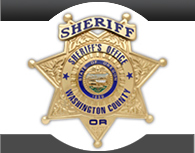 Updated February 1, 2019, at the bottom of the blog entry:
Updated February 1, 2019, at the bottom of the blog entry:
The House and Senate have passed a bill to reopen the government until February 15, and the President is expected to sign it – it may be signed by the time this blog is published.
The impact of the shut down on US public lands – national parks, national forests, national monuments and Bureau of Land Management (BLM) land – is still being assessed, but we already know, per numerous press reports and social media reports by visitors, that it’s been bad: trash, graffiti, plant destruction, trail destruction and more.
Official groups that volunteer on US public lands have all been somewhat or entirely inactive as well during the shutdown because they are under the auspices of official partnerships with federal offices, and their liaisons have all been out during the shutdown. Many have been making plans during the shutdown on what to do immediately when the shutdown ends, and many will be starting activities ASAP to address the damage that’s been done to national public lands.
If you want to help volunteer in the next two weeks in particular to address the damage on US public lands during the shutdown, look for “Friends of…” groups that support specific national parks, national forests, etc. You can find these using Google, Bing and Facebook. Check their social media accounts for updates on what their immediate volunteering activities will be and apply to volunteer via their web sites. If they don’t have a way to fill out an application on their web site, email them and ask how you can become a part of their efforts.
These groups do not provide transportation to the public lands they support, nor do they provide accommodations – that means if, say, you want to help at the Grand Canyon, you have to get yourself to the Grand Canyon, find and pay for a hotel or motel room somewhere, etc., all paid for by you. If you decide you want to join in on these volunteering efforts, you need to be prepared to be self-funded and get to wherever the group wants you to be on your own.
You also need to apply to become an official volunteer with any volunteering group you want to help – don’t just show up at the gates of a national park, national forest, etc., and say, “Here I am!” These groups have information on their web sites on how they do this. You may want to apply to volunteer with more than one group – I have no idea if they are getting lots of applications or very few, nor any idea if you will get a quick response, or any response at all.
These groups could all be shut down again on Feb. 15, if no more permanent legislation is passed.
Also, remember that these groups need help year-round – when there’s not a shutdown happening. Many would welcome your support running their gift shops (which raise money for their efforts), building and restoring trails, leading groups and more.
Update: I curated tweets sent by various people and organizations about #volunteers helping on public lands – national parks, forests, monuments, BLM land, etc. – during the 2018-2019 US Federal government #shutdown. The tweets have a lot of links to news articles. I’ve posted this list of curated tweets to Wakelet.
One of the social messages that went viral during this shutdown was a video of a group of spontaneous, unaffiliated community volunteers being told they had to stop cleaning up in the Shiloh National Military Park in Tennessee. Again: official groups that volunteer on US public lands had to be inactive during the shutdown because they are under the auspices of official partnerships with federal offices, and their liaisons were all out during the shutdown. The park worker or law enforcement person or whoever it is in the video did a very poor job of trying to say this in explaining why the people had to stop trying to clean up the park, and his explanation left these community members confused and angry. What he should have said was this:
Thank you. I know you all really care about this park and it’s bothering you to see trash and other debris laying around. These are public lands, your lands, and of course, you feel like you want to clean them up. However, even when the government isn’t shut down, even when there is staff in the parks, people cannot just show up at the park and “volunteer” here. We don’t allow people to spontaneously volunteer, without any formal affiliation with our park, because of liability risks and because of the risk, however small, that unsupervised volunteers will do damage. I so appreciate what you are doing, but park policy says you need to stop. Here is the name of the person you can call the day after the shutdown stops so that your group can volunteer.
Of course, if you’ve watched the video, based on the logic used by the worker, all those unaffiliated volunteers had to do was say, “Oh, we’re not volunteers. I’m an individual citizen enjoying the park and this is how I choose to enjoy it.” They might have gotten away with it.
Sadly, there have been cases where even “official” volunteers on public lands have caused damage. For instance, 30 miles of dirt trails and primitive roads in Deschutes National Forest in Oregon were deliberately wrecked in 2014 by unsupervised volunteers who were supposed to be doing necessary, environmentally-appropriate trail maintenance. They caused more than $200,000 in damage.
Also see:


